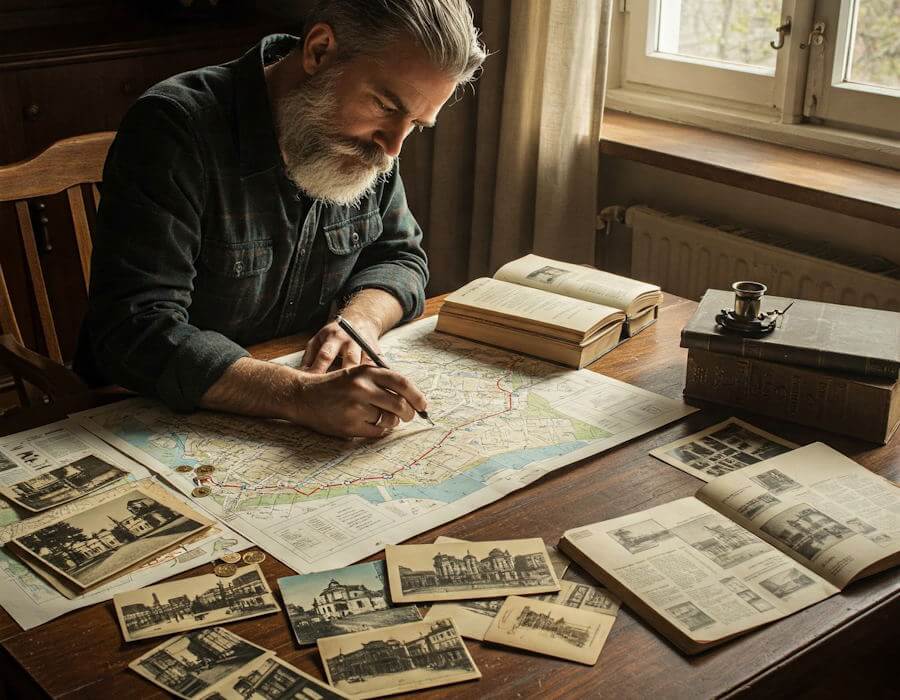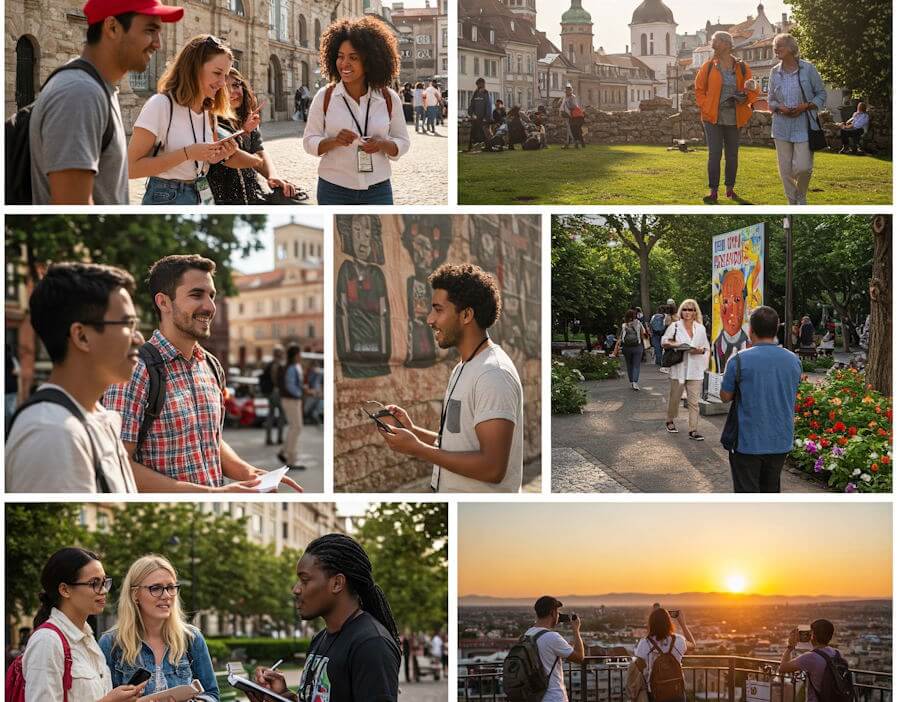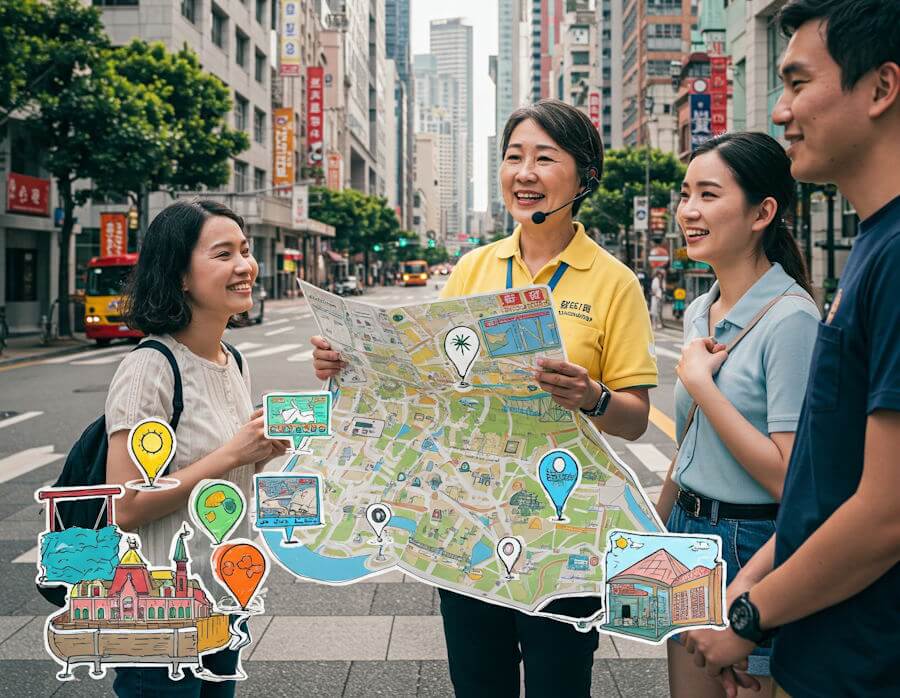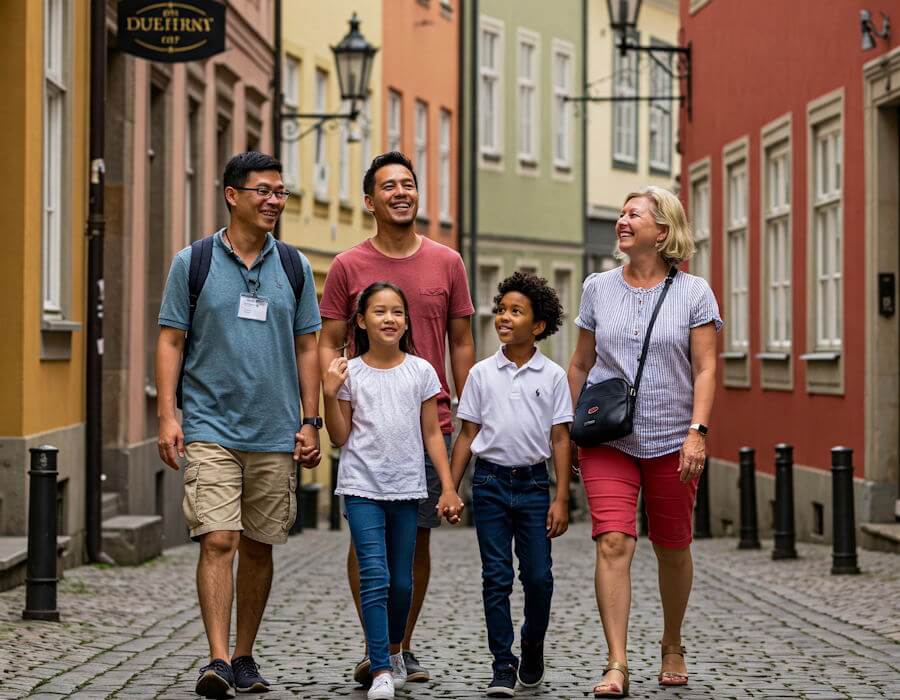Introduction to Forgotten History
Forgotten history refers to the lesser-known narratives and events that have shaped a city’s past. These stories often lie beneath the surface of more prominent historical accounts, overshadowed by well-documented occurrences. However, they hold significant value in understanding a city’s identity and the cultural fabric that shapes the lives of its residents. The concept of forgotten history emphasizes the importance of inclusivity in the storytelling of a locale’s past, giving voice to the various communities that have contributed to its development.
The significance of forgotten history lies in its ability to foster a deeper connection between residents and their environment. By exploring these overlooked stories, individuals can gain insights into the daily lives, struggles, and triumphs of those who came before them. This exploration aids in cultivating a sense of belonging and pride, as residents uncover the rich tapestry that makes their city unique. Furthermore, forgotten histories often challenge dominant narratives, prompting critical reflections on social issues, cultural diversity, and the dynamics of power within a community.
Conducting historical tours that spotlight forgotten events and figures provides an engaging approach to rediscovering a city’s past. These tours not only serve educational purposes but also foster a greater appreciation for the intricate relationship between the present and the historical landscape. Local historians and passionate guides play a crucial role in this endeavor, helping participants navigate through distorted memory lanes and reshape their understanding of the city’s heritage. By focusing on forgotten history, these tours create opportunities for dialogue, encouraging both residents and visitors to appreciate what has been lost as they seek to enrich their own experiences.
Researching Your City’s Hidden History
To craft a compelling tour centered on your city’s forgotten history, comprehensive research is imperative. The initial step in this process is to explore local libraries, which often serve as treasure troves of historical documents, records, and books about the city’s past. Libraries typically house archives containing primary sources, such as newspapers, maps, and photographs, which can provide context for the narratives you wish to share. Engaging with librarians can also prove beneficial, as they may offer guidance on navigating the available resources and suggest lesser-known materials that could enrich your research.
In addition to libraries, visiting historical archives is essential for anyone looking to delve deeper into their city’s history. Archives often retain essential documents, including city planning records, legal documents, and personal letters that can shed light on everyday life in the past. Furthermore, local historical societies frequently maintain accounts and databases that spotlight significant yet overlooked events or communities. These sources can weave together a comprehensive narrative that tells the story of your city beyond its well-known landmarks.
Utilizing online databases can also enhance your research efforts. Websites dedicated to genealogy and local history often contain digitized collections, records, and searchable databases. These digital resources can offer unique insights into the city’s past and allow you to explore connections between different historical threads. Additionally, coalescing information from interviews with longtime residents and local historians can uncover unique anecdotes and personal stories that may not be documented elsewhere. Engaging with individuals who have rich knowledge of the city’s history adds a personal touch to your narrative, grounding it in the lived experiences of its inhabitants.
In conclusion, thorough research conducted through various methods will not only inform your understanding of the city’s hidden history but also enhance the authenticity and depth of the tour you design.
Identifying Key Historical Sites
When designing a tour that explores your city’s forgotten history, identifying key historical sites is a crucial step. These sites not only allow participants to engage with the past but also help to reveal stories that have been overlooked. To begin, consider the criteria for selection. Historical significance is of paramount importance; focus on sites that played a crucial role in your city’s development or showcase unique cultural or architectural elements. Investigate local archives, libraries, or historical societies to uncover names and locations that might not be immediately recognized.
Another factor to consider is the location. Aim for a balanced distribution of sites throughout the city, ensuring that they are not too clustered or too far apart. Accessibility plays a significant role as well. Choosing sites that are easy to reach by public transport, walking, or cycling can significantly enhance the experience for participants. Pay close attention to the terrain and urban structure to identify which sites are convenient to include in your tour.
Once you have established your criteria, begin compiling a list of potential stops. This list could include lesser-known buildings, forgotten parks, or local monuments that spark curiosity and invite storytelling. Engaging questions like “What is the story behind this site?” or “How did this location affect the community?” can enrich the tour experience. Incorporating such factors will cultivate a richer understanding of the city’s history and encourage deeper discussions around the sites. Ultimately, the goal is to create a narrative that entertains as well as informs, revealing the hidden aspects of your city that are waiting to be discovered.
Creating Compelling Narratives
Compelling narratives play a vital role in breathing life into a city’s forgotten history. The art of storytelling allows tour creators to transform dry historical facts into engaging tales that resonate with modern audiences. A well-crafted narrative captivates the listener, enriching their understanding of the past while connecting it to their present experience. Consequently, weaving in personal anecdotes, emotional elements, and relevant historical context becomes paramount in developing narratives that inspire and educate.
Personal anecdotes are particularly effective in fostering connections between the audience and the historical events being recounted. By incorporating stories that reflect the experiences of individuals who lived through significant events, tour guides can create a more immersive experience. For example, recounting a local’s perspective during a pivotal moment in history can evoke empathy and understanding, making the narrative feel authentic. Additionally, including recognizable community figures or landmarks within these stories makes the content relatable, drawing listeners in through familiar references.
Emotional appeal should not be overlooked; stories that evoke emotions such as pride, sorrow, or triumph can leave a lasting impression. Achieving this requires an understanding of the historical context surrounding the events being highlighted. Relating the significance of these events to modern struggles or triumphs can help bridge the gap between the past and present. Using vivid language and descriptive imagery can also enhance the storytelling experience, allowing listeners to visualize the unfolding events in their minds.
It is essential to highlight key historical figures and moments throughout the storytelling process. By presenting well-researched information and aligning it with the narrative framework, content creators can elevate the storytelling experience. Through engaging narratives, audiences will be not only informed but also inspired to delve deeper into their city’s unique historical tapestry.
Designing the Tour Route
Creating an engaging tour route that highlights a city’s forgotten history requires thoughtful planning and logistics. The first step in designing an effective tour route is to determine the key historical sites to include. Conducting thorough research on engaging anecdotes and significant stories associated with each site will enrich your narrative. Additionally, consider the proximity of these sites to one another to facilitate smooth transitions while walking. A well-planned route should ideally cover no more than two to three miles, allowing participants to absorb the history without feeling fatigued.
Next, the order of the sites is crucial in maintaining a logical flow. Start with the most prominent locations that anchor the tour, then gradually lead participants to lesser-known sites. This approach keeps the group’s interest high and builds excitement around the upcoming revelations. It may also be beneficial to include sites that can visually or thematically connect, thereby enhancing the storytelling aspect of the tour. Ensuring that participants encounter a diverse range of architectural styles and historical narratives will help to keep the experience dynamic and engaging.
Another important aspect of tour design is incorporating breaks at strategic points. Designing these pauses allows participants to rest, reflect, and digest the information shared. Use these breaks to provide additional context or anecdotes, offering a more personal connection to the history being explored. Consider interactive elements such as short group discussions, hands-on displays, or even local delicacies at designated resting spots to enrich the experience further. Keeping the tour balanced between informative and enjoyable will not only educate but also foster a memorable connection to the city’s hidden histories. This thoughtful integration of logistics, narrative flow, and participant experience forms the foundation of a successful historical tour.
Incorporating Interactive Elements
To create a captivating and memorable tour based on your city’s forgotten history, integrating interactive elements is essential. Engaging your audience not only enhances their overall experience but also fosters a deeper connection to the historical content being presented. Various methods can be employed to infuse interactivity into your tour, ensuring that participants remain engaged and invested in the journey through time.
One effective strategy is to facilitate guided discussions throughout the tour. By encouraging participants to share their thoughts and opinions about the historical narratives being explored, you can create a dynamic atmosphere that stimulates critical thinking and personal reflection. For example, after presenting a particular historical event or figure, pose open-ended questions to the group, allowing them to ponder the implications of the past on contemporary society.
Another method to enrich the interactive experience is to implement audience participation through role-playing activities. As participants act out historical scenarios or take on the personas of significant figures from your city’s past, they gain a more immersive understanding of the events and their impact. This method can be particularly effective when discussing pivotal moments in history, helping individuals relate to the emotions and challenges faced by those who lived through them.
Incorporating technology can further enhance the interactive experience of your tour. Utilizing QR codes, for instance, can provide participants with instant access to supplementary multimedia content, including images, videos, or audio recordings that delve deeper into the subject matter. This tech-savvy approach not only captures the interest of tech-oriented participants but also offers an innovative way to present historical data, making the experience more enjoyable and informative.
By thoughtfully integrating these interactive elements, you can create a tour that not only educates but also inspires, leaving participants with a lasting appreciation for your city’s rich and often overlooked history.
Marketing Your Historical Tour
Effective marketing is crucial when launching a historical tour that aims to educate and entertain. Understanding your target audience is the first step in this process. Consider demographics such as age, interests, and cultural background, as these factors influence the way you will promote the tour. Tailoring your messaging to resonate with your audience will increase engagement and participation.
Social media serves as a powerful tool for outreach. Create pages or profiles on popular platforms like Facebook, Instagram, and Twitter, using them to share engaging content related to your local history. Posting enticing visuals, including a sneak peek of the tour highlights or historical anecdotes, can capture the attention of potential participants. Additionally, using hashtags relevant to your city and historical themes can help expand your reach to a broader audience.
Collaborating with local businesses can also enhance marketing efforts. Partnering with restaurants, cafes, and shops situated near your tour route can create mutual benefits. For instance, offering promotional discounts for customers who participate in the tour can drive traffic to both your event and their establishments. It cultivates a community spirit and encourages locality involvement, which is essential to showcase the city’s hidden history.
Furthermore, leveraging community events such as fairs, festivals, or cultural gatherings can provide a platform for visibility. Setting up booths or distributing flyers at these occasions allows for direct interaction with potential customers. It is an opportunity to engage people face-to-face and communicate the unique aspects of the historical tour personally. Creating visually appealing promotional materials with captivating graphics and compelling descriptions will draw interest and highlight the significance of the history being uncovered.
In conclusion, marketing a historical tour involves understanding your audience, utilizing social media, collaborating with local businesses, and actively participating in community events. By implementing these strategies, you will effectively promote your tour and engage with those eager to discover your city’s forgotten history.
Gathering Feedback and Making Adjustments
To ensure the sustained success and improvement of historical tours, gathering feedback from participants is crucial. This feedback serves as a vital source of information that can guide the refinement of both the narrative and the overall guest experience. A key strategy for collecting this valuable input is through the implementation of post-tour surveys. These surveys can be designed to encompass various aspects of the tour, from the historical accuracy of the content presented to the organization and execution of the event itself. By asking specific, targeted questions, tour organizers can better understand the strengths and weaknesses of their offering.
In addition to surveys, encouraging participants to leave reviews can provide insights into their experiences. Online platforms and social media can serve as effective tools for gathering these reviews. Positive feedback can accentuate what has worked well in the tour design, while constructive criticism may reveal areas that require enhancement. Responding to reviews, whether positive or negative, demonstrates a commitment to improvement and engagement with the audience.
Another method of collecting feedback is through informal discussions conducted immediately following the tour. Engaging participants in a dialogue allows for a nuanced understanding of their experiences and offers an opportunity to clarify any elements of the tour that may have been miscommunicated. This direct interaction can also help solidify a sense of community among participants, transforming them into advocates for future tours.
The incorporation of participant feedback is instrumental in adapting the tour experience to better meet the needs and expectations of future attendees. By actively listening and responding to suggestions, designers can create a dynamic, evolving historical tour that captivates and educates participants, ensuring the continuity and relevance of the shared history in the community.
Conclusion: Preserving and Celebrating History
Bringing forgotten history to light through community-led tours plays a pivotal role in educating both residents and visitors about the rich tapestry that forms the identity of a city. These tours serve as a dynamic platform for storytelling, enabling local historians and enthusiasts to share narratives that may have been overshadowed or neglected over time. By highlighting these lesser-known stories, participants can gain a deeper understanding of their community’s heritage and the various factors that have shaped its development.
Moreover, such initiatives contribute to the strengthening of community ties. As individuals come together to explore their shared past, they foster connections that transcend generational divides. This collaborative exploration of history can create opportunities for dialogue and interaction among diverse groups, enhancing social cohesion. Residents who participate in tours may find a renewed appreciation for their surroundings and the relationships they have with their neighbors, thereby cultivating a more profound sense of belonging.
Additionally, these tours instill a sense of pride in one’s heritage. By celebrating the unique characteristics and historical significance of their locales, communities can empower individuals to take ownership of their narratives. This newfound appreciation encourages individuals to advocate for the preservation of historical sites, furthering a collective effort to safeguard cultural landmarks for future generations.
In light of these benefits, it is essential for readers to consider embarking on this journey of discovery. Engaging in community-led historical tours not only enriches personal knowledge but also contributes to a collective memory that honors the past. By participating in such meaningful initiatives, individuals become active stewards of their history, ensuring that the stories of yesteryear continue to resonate in the hearts of their communities. The world of forgotten history awaits—take the first step and explore your city’s hidden narratives.




